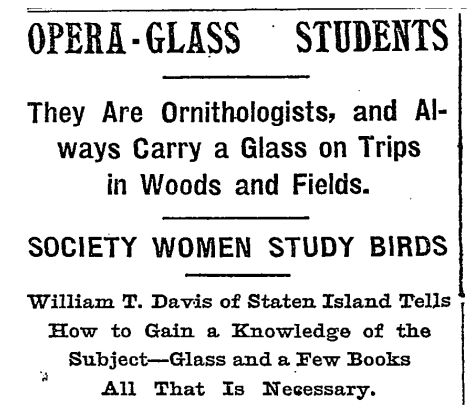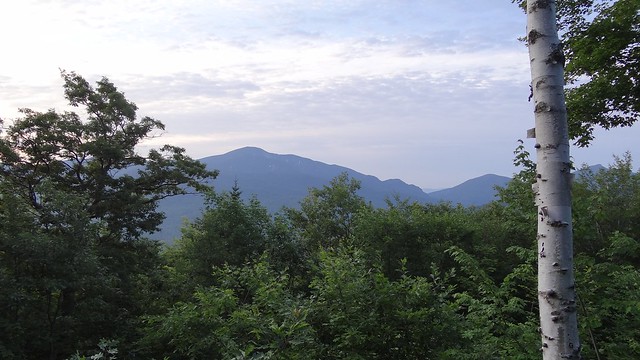
Well, name a hobby that isn’t. Close your eyes and picture the “typical” cross-stitcher or car collector or duck hunter or cake decorator.
I know, I know: there are plenty of men who knit and women who taxidermy fish, but mere reality is not the point. The point is that culturally, conventionally, “typically,” our leisure-time activities are allocated to one sex or another — and simple counterexamples, no matter how abundant, just can’t change that. Motorcycle racing is gendered male, and romance reading is gendered female, whatever the true demography of those hobbies might be.
What I find so fascinating about the gendering of birding, birdwatching, and amateur “ornithology” is that it has so perceptibly changed over the years — and not just once but several times. In fact, there is a good case to be made (and someday I’ll make it, given world enough and time) that the history of North American birding is not just marked but determined by those shifts.
The turn of the nineteenth and twentieth centuries saw some real anxiety about whether birds were a more appropriate object for female consideration or for male. Vertebrate natural history had been very much a man’s world since its invention in the sixteenth century, but that changed in the mid- and late nineteenth century, when suddenly women took to the field (the literal and the metaphoric). The response in the 1920s was the strident reassertion of bird study as “scientific” and “technical,” such that the influential (and eventually hegemonic) circles around such figures as Ludlow Griscom were transformed essentially into He-Man Woman-Hater Clubs.
A short generation before that, though, right at the end of the nineteenth century, some male birders attempted not to reject but to co-opt the feminization of their sport, to transform birding women into an army led by male generals. The well-known example, of course, is the mobilization of “feminine” sentimentality in the plume wars of the 1880s and 1890s, a campaign largely orchestrated by male scientists and conservationists but carried out by garden and bird clubs whose membership was mostly female.
A more subtle attempt to assign gendered roles to birders is attested in a beautifully revealing document I had never seen until I ran across it in (inevitably) the search for something else. On July 31, 1898, the New York Times published nearly two columns urging “more women to take up the study of birds.”

A number of New York’s fashionable women have discovered this, and for the last Summer or two an experienced ornithologist has had out-of-town classes, which have gone afield with him to study birds.
There’s a lot to say about that sentence — the women are “fashionable,” the man is “experienced” — but the main point is simply that while the enthusiasm is female, the leadership is male. There is an especially rich irony in the title of the article, “Opera-glass Students,” an obvious borrowing from Florence Merriam’s Birds Through an Opera Glass; the author of the article (I suspect William T. Davis himself) lists that book fourth in his recommendations, reserving the first two places, like a good New Yorker, for Frank M. Chapman’s Bird Life and Handbook.
Over most of the article, Davis simply spouts unconnected bird facts in a disturbingly stream-of-consciousness way. Only at the very end does he seem to remember that he has a reading audience — and he obviously has a very clear, and very clearly gendered, notion of who that audience is:
There is one advantage in the study of birds … it is not necessary to have a collection of specimens to litter the house….
Don’t you worry, little society ladies.












